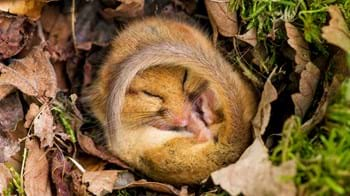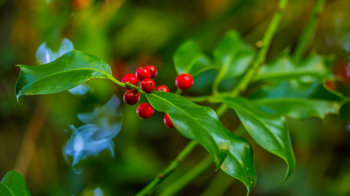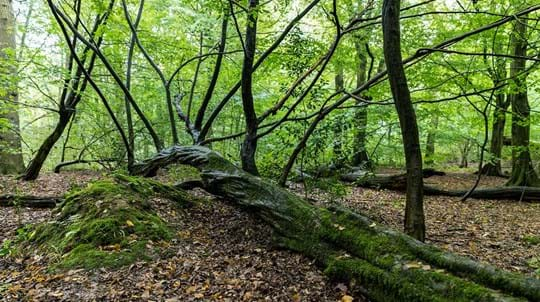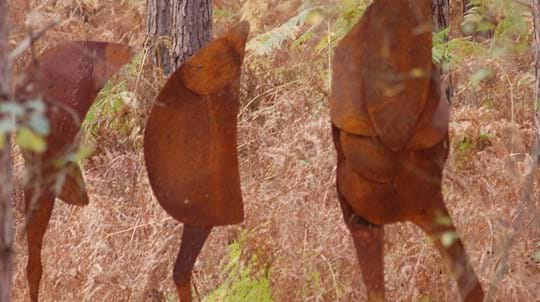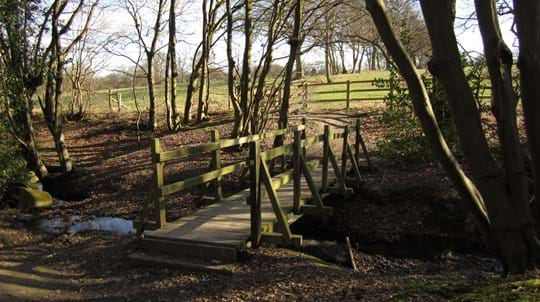
Wormley Wood & Nut Wood
Hoddesdon nr Hertford

Woodland Trust wood group
- Wormley Wood
- Nut Wood
137.41 ha (339.54 acres)
TL317057
Explorer 174
OS Landranger 166
Wormley Wood & Nut Wood are part of the Broxbourne Woods National Nature Reserve. They not only provide unique and important habitats, but they are also of local historical importance.
Lying side-by-side, these two ancient woods are rich in native oak and hornbeam and teem with wildlife. There are bird and butterfly species in abundance, as well as varied fungi, mosses and ferns flourishing by the pond in Wormley Wood. Vibrant displays of wild flowers can be seen in the spring and the sweet scent of honeysuckle fills the air in summer months, attracting white admiral butterflies.
Features
- Parking nearby
- Public access
- Autumn colour
- Waymarked walk
- Broadleaved woodland
How to get to Wormley Wood & Nut Wood
Wormley Wood & Nut Wood lie within London’s green belt, just over 32km (20 miles) from the centre. They make up 142.5 hectares (352 acres) of the Broxbourne Woods National Nature Reserve.
The woods sit within a landscape of agricultural land and woodland in the undulating Hertfordshire plateau.
From the A10, follow the brown tourist attraction signs for Paradise Wildlife Park (EN10 7QA), located on White Stubbs Lane. Bencroft West car park is on the north-east corner of the site, just off White Stubbs Lane and around 1.4km (0.8 miles) west of Paradise Wildlife Park.
The nearest station is at Bayford, 2km (1.2 miles) north-west of the woods.
Visit National Rail for more information.
The nearest bus stop is Hammond Street/Darnicle Hill, 300 metres south of the wood along a hard-surfaced bridleway. Turn left towards the village after 1.6km (1 mile) to find the bus stop.
Visit Traveline for more information.
Facilities and access
There’s a substantial network of paths and a waymarked trail in the woods. The routes are gently undulating and locally uneven with some steep sections, steps and footbridges. They are seasonally wet and muddy in places.
A public footpath runs north to south through the site with squeeze-gap entrances into the wood directly off White Stubbs Lane and through to Hammondstreet Road. A hard-surfaced bridleway also runs through the wood, entering it in the north-east corner via Bencroft Woodand and exiting 300 metres short of Hammond Street in the south.
Bencroft West car park, on the edge of Bencroft Wood, is located on the north-east corner of the site, just off White Stubbs Lane and approx. 1.4km (0.8 miles) west of Paradise Wildlife Park. The car park has space for up to seven cars. Wormley Wood & Nut Wood are 250 metres (270 yards) south from the car park, along stony paths.
The nearest public toilets are approximately 5km (3 miles) away at Cheshunt Tesco Extra supermarket, Brookfield Centre.
Baby-changing facilities and an accessible toilet are available during the supermarket’s opening hours.
Wildlife and habitat
Animals
The ancient woodland that still remains in Hertfordshire provides a precious home for some of the UK’s most endangered wildlife species, many of which have been identified as of conservation priority across the UK.
Trees, plants and fungi
One of only two areas of oak-hornbeam forest in the UK, Wormley Wood & Nut Wood are of European importance and are both listed as a Special Area of Conservation (SAC).
Wormley Wood is largely ancient woodland which has been coppiced from the medieval period. Today, this work is continued by volunteers to maintain the special habitat. Part of the wood was replanted with conifers in the 1800s. These areas are now being gradually replaced with regenerating native species.
Nut Wood was formerly ancient, semi-natural woodland that was cleared and replanted with Japanese larch in the 1980s. It is now being restored with native species, predominantly oak, hornbeam and birch.
Habitats
Ancient woodlands are a greatly diminished habitat in the UK. The varied habitats in Wormley Wood & Nut Wood provide vital spaces for a wide range of uncommon flora and fauna, while open areas are important habitats for reptiles and butterflies.
History of Wormley Wood & Nut Wood
Wormley Wood & Nut Wood play an important part in local history. People have lived and worked in the area since the Bronze Age, with the first written mention of Wormley Wood occurring in the sixth century.
Archaeology
On your walk, look out for remnants of ancient field systems, a series of woodbanks and ditches, mark out late Bronze Age field systems and Saxon kingdom boundaries through the Broxbourne Woods.
There’s also a Roman road which connected London and York cut through these woods. Ermine Street was an important military route in later times as it divided the East Saxon kingdoms from Mercia. It is thought to have been used by William the Conqueror and Oliver Cromwell.

Credit: Moocowh / WTML
Industry
Wormley Wood was managed for timber production, producing hornbeam coppice from the mid-medieval period and into the Elizabethan era when the wood was bought by the Cecil family.
Dating back to the 1860s, the coal post in Wormley Wood is one of 250 markers scattered around the outskirts of London. They were used to charge duty on incoming loads of coal to the city.

A lasting legacy
This wood is just one of many to have been protected by gifts in wills, securing it for generations to come. Your legacy gift could also make a real difference to woods, trees and wildlife.
Learn what your gift could meanThings to do in Wormley Wood & Nut Wood
Orienteering
Chigwell and Epping Forest Orienteering is the orienteering club for Epping Forest, with members across north and east London (Newham, Redbridge and Waltham Forest), East Hertfordshire and West Essex - run events in Wormley.

Visiting woods
Walking dogs in our woods
Dogs are welcome for walkies in our woods. Take a look at our tips and guidelines for ensuring we keep our woods safe and special for dogs and wildlife.

Visiting woods
Events
Discover events at our woods and the festivals and fairs you can find us at soon.

Visiting woods
Things to do in the woods
Go on an adventure. Get closer to nature. Uncover history. Discover ways to explore the UK's woods whatever the season.
















